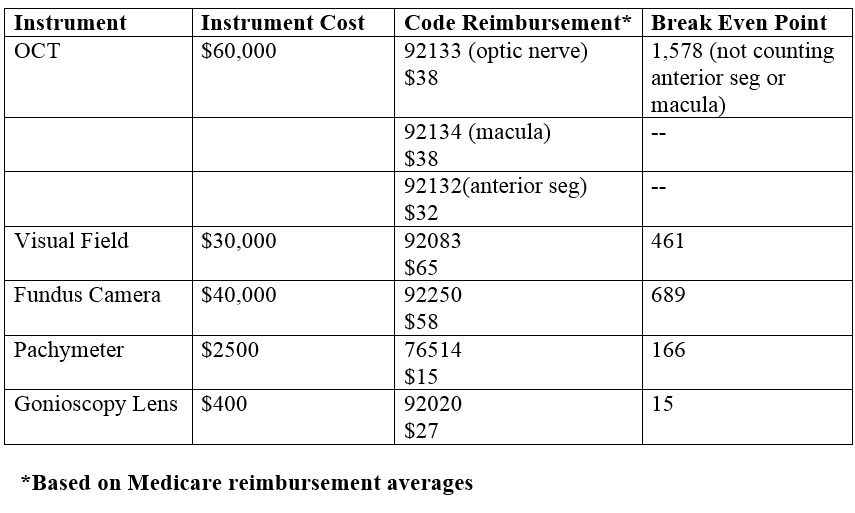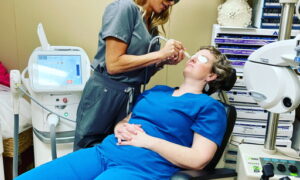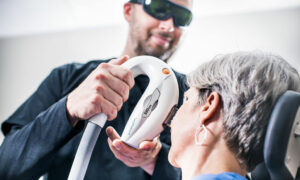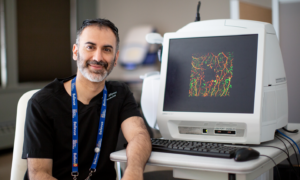By Daniel Epshtein, OD, FAAO

Nov. 28, 2018
The nation’s population has an older age profile than it did 17 years ago, according to the U.S. Census Bureau. The nation’s median age — the age where half of the population is younger and the other half older — rose from 35.3 years on April 1, 2000, to 37.9 years on July 1, 2016.
With such senior population growth, your practice should have a plan for profitably caring for these patients. I would estimate that about 50 percent of my patient encounters are with senior patients, those 65 and older. Not only do ocular diseases tend to be more prevalent in seniors, this population tends to be more compliant with follow-up than my younger patients.
Due to the higher prevalence of disease, managing these patients often requires multiple follow-up visits and auxiliary tests such as OCT, visual field and fundus photography. In addition to allowing you to provide superior care, follow-ups and additional testing can help fill out your schedule and increase revenue through added billing.
Note Common Conditions, Diagnose & Address Treatment Needs
The most common eye conditions in seniors within my practice are cataracts, dry eye, blepharitis, age-related macular degeneration, glaucoma/glaucoma suspects, diabetes with and without retinopathy, and lid malposition. The use of OCT, fundus photography (standard or ultra-widefield), perimetry, and pachymetry is imperative to properly caring for these conditions. Though the upfront cost of these instruments might seem high, it is important to consider the additional patients and follow-ups that your practice will garner to help the offset the initial investment.

Reimbursement from Medicare Higher Than You May Think
For practices that accept many vision and Medicaid plans, the significantly higher reimbursement of Medicare is a welcome boon to the bottom line. Unlike most vision plans, Medicare often has fewer restrictions in the services that optometrists can provide and bill for.
An important thing to remember with Medicare is that, unlike vision plans, most patients will have a deductible that they are responsible for; this is especially important in the beginning of the year when deductibles reset. Also, unlike vision plans, refractions are not covered by Medicare, and should be billed to the patient or to another insurance as part of a coordination of benefits.
Address Common Senior Visual Challenges
The most common visual challenge that I have experienced working with seniors is degradation of vision associated with early cataracts. Surgery is often not indicated for mild cataract-related changes, but patients may complain that their vision “just isn’t good enough” with their new glasses. In these patients, I work on optimizing their vision by treating ocular surface disease, educating on increased illumination during specific visual tasks and recommending different refractive options for various activities.
Other Articles to Explore
I find that even patients who are experienced progressive addition lens users will find that a single-vision reading lens will provide improved vision and visual comfort during prolonged near work. Sometimes I increase the add for these single-vision reading lenses to act as a minor low-vision device.
Having a selection of basic and lower-cost frame options for second-pair sales can go a long way in overcoming the visual challenges that seniors may have. Polycarbonate, though it has greater aberrations, is significantly lighter than cr39, and may be a good option for patients who have high adds and dislike heavy glasses. Dispensing handheld magnifiers is a relatively easy practice addition, and can greatly improve a patient’s visual function.
Make It Easy for Seniors to Follow Your Treatment Plan
Seniors often have multiple medical conditions and doctors that they see. It can be difficult to keep track of all the conditions and treatment plans. For this reason, I often give out written material summarizing their diagnosis and treatment plan. I make sure that the print is large, so it is easily read, even by those with reduced vision. Depending on the condition, the summary will have a pre-printed treatment protocol, or I may write the treatment plan as I discuss it with the patient.
Schedule Seniors at Slow Times in Schedule
Often, older patients will have extensive ocular and systemic histories, which can significantly prolong the exam. In these cases, I problem-orient the exam, which is helpful in decreasing patient fatigue and staying on schedule. In the geriatric population, these problems can be exacerbated by poor mobility, hearing or memory. It may be advantageous to schedule these patients at slower times of the day or week, so that you can devote more time to them.
Many senior patients are wheelchair-bound, therefore, having a wheelchair-accessible exam lane can be of great use. Many patients may be able to transfer from the wheelchair into the exam chair, but this can be time consuming and bring excess risk during the exam.
Address Elder Care Concerns
As doctors who provide medical care, it is important that we not forget that our older patients sometimes need social care in addition to the ocular treatment we provide. It is important to intercede if you suspect that a patient is not able to adequately care for themselves or is a victim of elder abuse. Sometimes a simple suggestion to follow-up with their primary medical doctor to discuss the need for a home health aide can make a huge impact on a patient’s quality of life.
Great Care & Word-of-Mouth Still Best for Marketing Senior Care
Though more seniors are now using the internet and social media, I believe the best way to market to this population is by providing great care and optical services while accepting the insurances that these patients have. Word-of-mouth has been by far the greatest marketing tool for seniors within my practice. There have been several times where one of my senior patients will bring a friend to a follow-up just so that friend can set up an appointment to visit us, too.
Providing care to seniors will become more common as the U.S. population ages. With the proper equipment and mild practice adjustments, growing your practice to accept this population while providing full-scope care can be both professionally fulfilling and financially rewarding.
 Daniel Epshtein, OD FAAO, practices at Mount Sinai St. Luke’s and at an independent practice in New York. Previously he worked at a high-volume, multi-specialty practice where he provided refractive, medical and perioperative care. He combines his research experience with the latest clinical practices to provide the best possible care for his patients. To contact him: daniel.epshtein.od@gmail.com
Daniel Epshtein, OD FAAO, practices at Mount Sinai St. Luke’s and at an independent practice in New York. Previously he worked at a high-volume, multi-specialty practice where he provided refractive, medical and perioperative care. He combines his research experience with the latest clinical practices to provide the best possible care for his patients. To contact him: daniel.epshtein.od@gmail.com



























